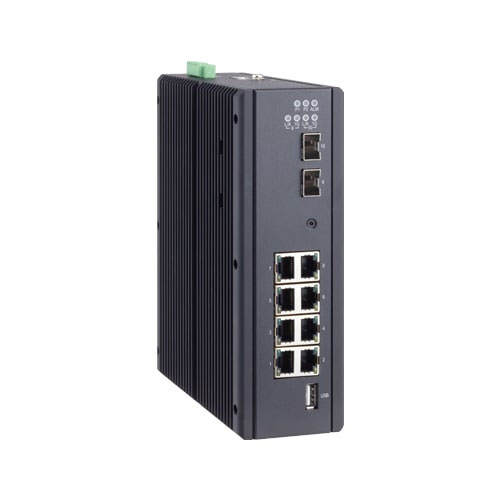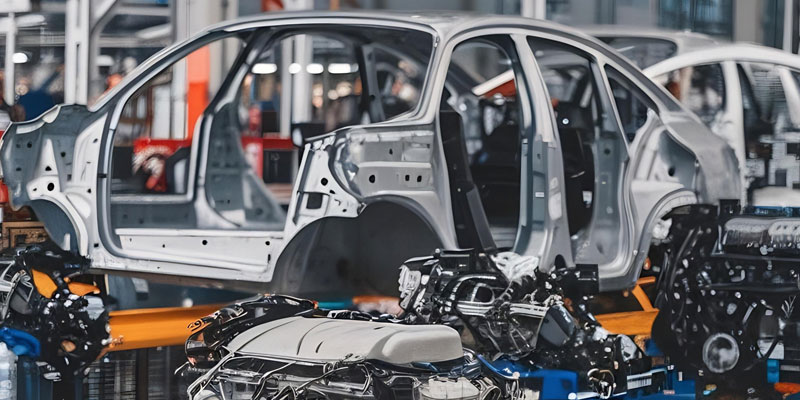Schedule a Call Back
Controlling the Corrosion Menace
 Technical Articles
Technical Articles- Oct 09,14
On a fateful day in June this year, a massive fire broke out following a blast in a pipeline of the Gas Authority of India Limited (GAIL) in East Godavari district of Andhra Pradesh. More than 15 people were reported killed and over 40 injured in the accident. Besides the human casualties, the fire caused massive losses as coconut trees, crops, cattle and wild birds in over 10 acres were reduced to ashes.
In the third week of August, media reports quoting the Petroleum Ministry said an inquiry committee headed by the Joint Secretary of Refineries had submitted that the pipeline had corroded due to condensate and water that came along with the natural gas from an ONGC field. Water corroded bottom of the pipeline, causing pores in the underground pipeline. The gas being transported at high pressure leaked along with flammable condensate to the surface and a spark, the source of which is not confirmed, caused the condensate and gas cloud to catch fire with a loud explosion.

World over, corrosion is the invisible enemy causing visible damage and is experienced in most industries - manufacturing, petroleum, chemical and fertilisers, oil and gas, transportation, power, highway and railways. Globally, the damage caused by corrosion is multi-billion dollars. An enormous loss, more so, as experts say a substantial portion of this can be saved if proper corrosion management systems are adopted.
According to Generation 2 Materials Technology (G2MT) Laboratories, a US-based 'company of engineers and researchers that love to take on challenging cases and problems', in 2013 the total cost of corrosion in the US exceeded $1 trillion annually for the first time. If this is the case of a developed economy, one can imagine the state of affairs in a developing country where these are not seen as pressing concerns that need immediate attention.

Corrosion can be defined as "the degradation of a material due to a reaction with its environment". Degradation implies deterioration of physical properties of the material. This can be a weakening of the material due to a loss of cross-sectional area, it can be the shattering of a metal due to hydrogen embrittlement, or it can be the cracking of a polymer due to sunlight exposure. One instantly associates corrosion with metals, as they are the most used type of structural materials, One common example is the process of rusting, during which iron oxides form in the presence of moisture. Apart from metals, materials could also mean polymers (plastics, rubbers, etc), ceramics (concrete, brick, etc) or composites - mechanical mixtures of two or more materials with different properties.
The Corrosion Technology Laboratory of NASA classifies corrosion by the following terminology. Though there is no universally accepted terminology in use it should be kept in mind that a given situation may lead to several forms of corrosion on the same piece of material.
Uniform corrosion
This is also called general corrosion. The surface effect produced by most direct chemical attacks (e.g., as by an acid), is a uniform etching of the metal.
Galvanic corrosion
Galvanic corrosion is an electrochemical action of two dissimilar metals in the presence of an electrolyte and an electron conductive path. It occurs when dissimilar metals are in contact.
Concentration cell corrosion
Concentration cell corrosion occurs when two or more areas of a metal surface are in contact with different concentrations of the same solution.
Pitting corrosion
Pitting is localised corrosion that occurs at microscopic defects on a metal surface. The pits are often found underneath surface deposits caused by corrosion product accumulation.
Crevice corrosion
Crevice or contact corrosion is the corrosion produced at the region of contact of metals with metals or metals with non-metals. It may occur at washers, under barnacles, at sand grains, under applied protective films, and at pockets formed by threaded joints.
Filiform corrosion
This type of corrosion occurs on painted or plated surfaces when moisture permeates the coating. Long branching filaments of corrosion product extend out from the original corrosion pit and cause degradation of the protective coating.
Intergranular corrosion
Intergranular corrosion is an attack on or adjacent to the grain boundaries of a metal or alloy.
Stress corrosion cracking
Stress corrosion cracking (SCC) is caused by the simultaneous effects of tensile stress and a specific corrosive environment. Stresses may be due to applied loads, residual stresses from the manufacturing process, or a combination of both.
Corrosion fatigue
Corrosion fatigue is a special case of stress corrosion caused by the combined effects of cyclic stress and corrosion. No metal is immune from some reduction of its resistance to cyclic stressing if the metal is in a corrosive environment.
Fretting corrosion
The rapid corrosion that occurs at the interface between contacting, highly loaded metal surfaces when subjected to slight vibratory motions is known as fretting corrosion.
Erosion corrosion
Erosion corrosion is the result of a combination of an aggressive chemical environment and high fluid-surface velocities.
Dealloying
Dealloying is a rare form of corrosion found in copper alloys, grey cast iron, and some other alloys. Dealloying occurs when the alloy loses the active component of the metal and retains the more corrosion resistant component in a porous "sponge" on the metal surface.
Hydrogen damage
Hydrogen embrittlement is a problem with high-strength steels, titanium, and some other metals. Control is by eliminating hydrogen from the environment or by the use of resistant alloys.
Corrosion in concrete
Concrete is a widely used structural material that is frequently reinforced with carbon steel reinforcing rods, post-tensioning cable or pre-stressing wires. The steel is necessary to maintain the strength of the structure, but it is subject to corrosion.
Microbial corrosion
Microbial corrosion is corrosion that is caused by the presence and activities of microbes. This corrosion can take many forms and can be controlled by biocides or by conventional corrosion control methods.
Corrosion can be controlled, if not eliminated, by adopting the following methods:
Design
One of the considerations often overlooked in designing is drainage. For example, corrosion of an automobile side panel could be minimised by providing drainage to allow any water and debris to fall off of the car instead of collecting and causing corrosion from the far side of the panel.
Materials Selection
Carbon steel
Most large metal structures are made from carbon steel-the world's most useful structural material. Protective coatings, cathodic protection, and corrosion inhibitors are all extensively used to prolong the life of carbon steel structures.
Stainless steel
Stainless steels are a common alternative to carbon steels. There are many kinds of stainless steels, but the most common austenitic stainless steels (300-series stainless steels) are based on the general formula of iron with approximately 18 per cent chromium and 8 per cent nickel. These austenitic stainless steels are frequently immune to general corrosion, but they may experience pitting and crevice corrosion and undergo stress corrosion cracking in some environments.
Aluminium
Aluminium alloys are widely used in aerospace applications where their favourable strength-to-weight ratios make them the structural metal of choice. They can have excellent atmospheric corrosion capabilities. Unfortunately, the protective properties of the aluminium oxide films that form on these alloys can break down locally and allow extensive corrosion. Copper alloys
Brasses and bronzes are commonly used piping materials, and they are also used for valves and fittings. They are subject to stress corrosion cracking in the presence of ammonia compounds. They also suffer from dealloying and can cause galvanic corrosion when coupled with steel and other structural metals. Most copper alloys are relatively soft and subject to erosion corrosion.
Titanium
Titanium is one of the more common metals in nature, but its limited use means that small-scale production operations result in a relatively expensive metal.
Protective coatings
Protective coatings are the most commonly used method of corrosion control. They can be metallic, or can be applied as a liquid 'paint'.
Inhibitors
Corrosion inhibitors are chemicals that are added to controlled environments to reduce the corrosivity of these environments. Examples include the chemicals added to automobile antifreezes to make them less corrosive.
Cathodic protection
Cathodic protection is an elec-trical means of corrosion control. Cathodic protection can be applied using sacrificial (galvanic) anodes or by means of more complicated impressed current systems.
(Article based on information sourced from: Corrosion Technology Laboratory, NASA, Kennedy Space Centre) http://corrosion.ksc.nasa.gov/corr_fundamentals.htm
Coating technology for underwater parts

Hydro-abrasive erosion in turbine components of hydro power plants is a problem especially in young geological mountains, in which the rivers have a high concentration of hard particles. In Asia the problem is especially large in hydro power plants situated in the Himalayan region due to very high particle content. During the monsoon season the particle content can increase from 50 mg/l to over 10'000 mg/l in a very short time and also large particles above 1 mm can then be suspended in the water. The resulting erosion can reduce the overall revenue over 10 per cent for the power plant due to reduction of the efficiency, high repairing cost and down time.
To reduce these erosion damages significantly Andritz Hydro started in the early eighties to carry out an extensive research process. Since 1986, components have been coated, first with chromium oxide plasma sprayed coatings, which was replaced in 1996 with the development of a premium tungsten carbide coating (SXH70) deposited by the HVOF technology (high-velocity-oxy-fuel).
SXH70 offers a much higher resistance to abrasive wear and is much less sensitive to particle impact. Since 2009 SXH7X-coating for Pelton runner with a higher resistance of the splitter and cutout was developed. In 2012 further developments have yielded a premium quality coating designated as SXH80 and SXH8X for Pelton runners with 20 per cent more erosion resistance.
While in the beginning the coated parts for the Himalayan region came from Andritz Hydro, Switzerland, the success was so great that the decision was taken in 2008 to start a coating workshop in the Andritz Hydro manufacturing plant at Prithla, near Delhi. Due to this, the coating workshop is well supported by machining, welding and grinding facility with highly trained staff.
The coating workshop has the newest state-of-the-art technology from the coating technology side and a robot so that all parts can be coated with highest quality. In close collaboration with the Research and Development Centre of Coating in Andritz Hydro also further developments are made and implemented.
The coating plant, which is operational since 2009, has been expanded further in 2012 with newly commissioned Multicoat equipment from Sulzer Metco in addition to the existing one. The coating shop has coated up till now guide vanes (500 units), Pelton runners (3 units) liner face plate segments (200 units), wearing segments (100 units), needles (100 units) and seat rings (100 units) and sealing rings (25 units).
Contact: Andritz Hydro Private Ltd, Palwal, Haryana. Email: Da.karandikar@andritz.com
Related Products

Compact Fmc - Motorum 3048tg With Fs2512
Meiban Engineering Technologies Pvt Ltd offers a wide range of Compact FMC - Motorum 3048TG with FS2512.

Structural Adhesive for Solar Panel Roof Mounting
Parson Adhesives India Private Ltd offers a wide range of structural adhesive for solar panel roof mounting – Partite 7535.

Industrial Tsn Switch
Contec launches a future-ready Industrial TSN Switch- SH-9210TSN.















